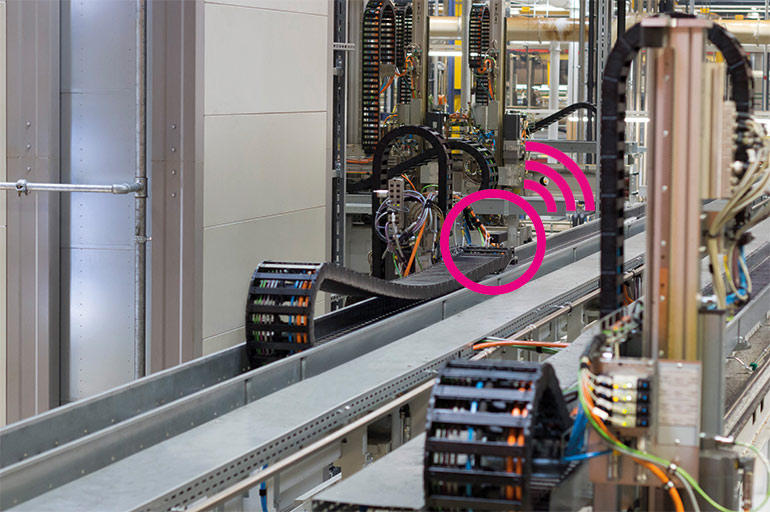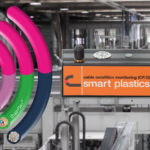Important decisions loom for manufacturers in making equipment more eco-friendly.
Contributed by Thomas Renner • on behalf of igus Inc.
Nowadays, sustainability permeates nearly every manufacturing decision. It’s not enough to just make a product anymore. Businesses are tasked with ensuring they comply with green energy initiatives, and phrases such as “circular economy” and “eco-friendly” dominate the industry lexicon. To adapt a phrase, the message seems clear: Go Green or Go Home.
While commonplace now, it’s important to realize that this focus on sustainability as a worldwide goal is still very much in its infancy. The first “Earth Summit” hosted by the United Nations occurred in 1992, with the objective to produce a “broad agenda and a new blueprint for international action on environment and development issues,” according to the UN. While not the first international conference to address environmental issues, the 1992 Earth Summit is considered by many to be the turning point in sustainability progress. A follow-up meeting was held in 2012.

Sustainability objectives have crystallized during modern manufacturing leaders’ rise through the labor ranks, and now they are embracing the worldwide trend to meet the challenges ahead.
Progress is being made and examples abound. Earlier this year, igus, a German manufacturer of high-performance motion plastics, unveiled the world’s first urban bike made from recycled plastic. The company, which runs its North American operations out of Providence, R.I., also unveiled the first energy chain made entirely of recycled material in June.
Cables have proven much harder to recycle. There are ways, however, in which manufacturers can improve their sustainability objectives by evaluating their cable selection.
In the beginning
Cables perform many different functions: uses include power, data, control, movement and motor feedback. They are used in robots, cleanrooms, energy chains, and manufacturing equipment. Statistics indicate the wire and cable market will reach $15.1 billion in the United States in 2022, a year-over-year increase of 6%.

The best way to enhance sustainability is to have a clear objective on how the cable supports the process. Cables start at less than $1 per foot, but a more expensive cable with added functionality might be a better choice. When it comes to cables for moving applications, such as on industrial machinery and equipment, this is certainly the case.
“We have had customers realize this and put a heavy emphasis on proper planning as well as installation,” said Tim Marran, igus’ Product Manager for chainflex cables. “This had led us to even offering a service where we will have certified technicians on site to do the cable and e-chain (cable carrier) installation work. That gives the customer peace of mind knowing that cable installation techniques, like cable placement in the neutral axis of an e-chain and strain relief, can be done properly.”
A range of mistakes are frequently made with cable installation for moving applications, including lack of interior separation in energy chains, uneven weight distribution, improper strain relief and not installing cables along the neutral axis.
“Simple considerations in the beginning of the process can prevent issues such as loss of continuity, insulation damage, mechanical deformation or electromagnetic interference,’’ Marran said.
Efficiency begins by selecting the right cables and installing them properly. Replacing cables every six months or year is highly inefficient. Manufacturers who design products and know precisely what they want the cable to achieve are in the best position to improve sustainability.
“It’s important to be transparent about the best way to reach a long lifetime of the cable selected,’’ said Marran, whose company offers a 36-month guarantee on its cables. “We have the testing and data to back it up. Every year we do research and development, and our testing process backs up our guarantee.”
Size matters
igus has been one of the leaders in adopting sustainable objectives. Besides designing a bike from recycled plastic and recycling energy chains, the company has stated its intentions to have all of its buildings and production be CO2 neutral by 2025. It reduced its CO2 emissions by 31% in 2021.
For cable design, the company has been seeking to make cables that are used in energy chain systems smaller. “This will help save space and weight inside the cable carrier system,’’ Marran said. “That will help with machine efficiency.”
Marran emphasized, however, that in some applications, larger cables might be more efficient. “This is where certain approvals or electrical characteristics would be beneficial to cut down on the number of parts and the amount of cable produced,’’ Marran said. “For instance, if insulation material increase would help gain the proper approval for 1,000 V instead of 600 V, the overall cable outside diameter might be a bit larger. But that part number could be used in many more applications, considering it would be electrically applicable in more areas.”
He cited the example of an automated guided vehicle application that improved efficiency by simply swapping cables. “We were able to increase the lifetime of their cable by 10x, simply by selecting the cable for the specific motion they were seeing,’’ Marran said.
Game-changing technology
One method in which manufacturers can improve efficiency — both with cable performance and plant operation — is through recently developed predictive maintenance systems. “Smart Plastics,” as igus calls it, allows customers to predict the lifetime of a product. The benefit is that manufacturers can see when equipment is reaching the end of its useful life. By replacing the component before it breaks, predictive maintenance also eliminates unplanned downtime.

“Smart Plastics isn’t just for our cables, but it also extends to e-chain parts, e-chain assemblies and other aspects as well,’’ Marran said. “I think it will be something more and more manufacturers focus on in the next 10 years.”
The company also provides a lifetime calculator and suggests other cables that might last even longer. “It might save the customer money if they aren’t looking for millions and millions of flex cycles,’’ Marran said.
Recycling challenges
For sustainability goals, it’s essential that manufacturers maximize efficiency because cables can be hard to recycle. There are many different cable layers — copper conductors, insulation, inner jacketing, shielding, outer jacketing and center strain relieving elements — that complicate the recycling process.

“Cable recycling is more complicated than with energy chains,’’ Marran said. “It doesn’t mean it’s impossible. We have been recycling cuts of cable for many years now.”
The company offers a 36-month guarantee and customers can order customized lengths. Whether it’s 1, 100, 10,000 ft or anything in between, customers can get the right cable with proper mechanical benefits.
“We already optimize the design of the cable, and with seven different jacket materials we can customize the cable part number solution to the specific application,’’ Marran said. “Customers aren’t wasting money on a cable they don’t need the mechanical benefits from but aren’t paying the smallest amount of money for a cable that won’t work and will require frequent replacement.”
The company did take one of the first steps this year in recycling initiatives with its first e-chain made from entirely recycled material.

Igus has been collecting used energy chains from customers since 2019, so they do not end up in industrial waste. More than 32 tons of material have been collected across 13 countries since the program began.
“The focus should not be only on first use of products, but also the reuse of raw materials,’’ said Jörg Ottersbach, head of igus’ e-chains business unit. “We see a lot of ‘cradle-to-cradle’ potential and strive to reprocess as many raw materials and discarded products as possible so that precious resources are not wasted but used wisely for as long as possible.”
Growth cycle

The challenge to develop sustainably friendly cables will become even more critical in the years ahead. Marran said increasing automation and a focus on reducing downtime will drive growth in the cable industry.
“With the pandemic we have faced in the last few years, more and more manufacturers are starting to look at different processes that can be automated,’’ Marran said. “We’ve also seen an increased focus on downtime costs. With the world getting more automated, it is also looking at becoming more and more efficient.”
With its written guarantee, lifetime calculator and wide range of cables, igus is poised to embrace the challenges of improving sustainability. The company started developing its cable products at nearly the same time as the 1992 UN meeting in Brazil. That has put them ahead of other companies that are now racing to catch up.
“We’re continually testing and adding new cables to the automation market,’’ Marran said. “Not many suppliers pour as much time, effort and energy into research, developing and testing of the cables to ensure they are the best cables for moving applications.”
Thomas Renner writes on architecture, building, engineering and other trade industry topics for publications throughout the United States. DW
Igus Inc. | igus.com







Leave a Reply
You must be logged in to post a comment.